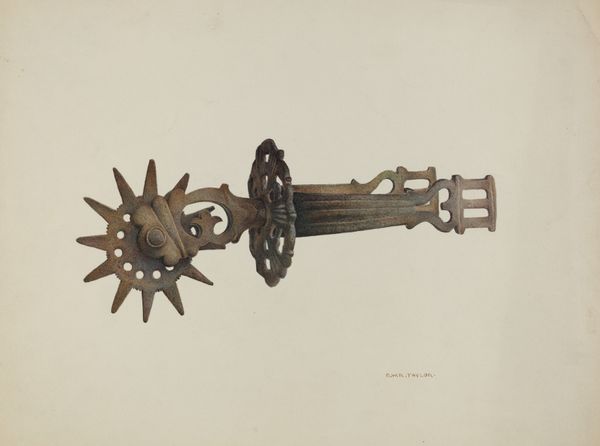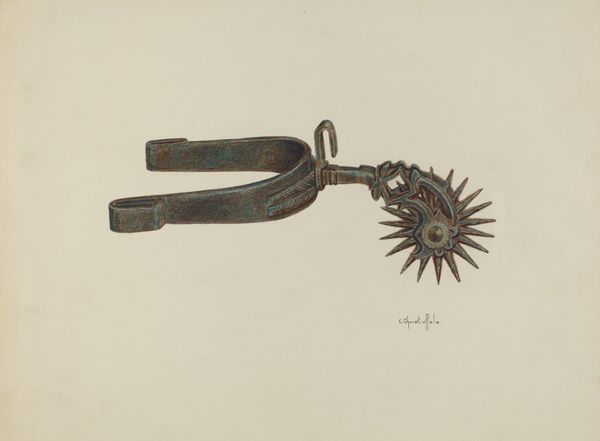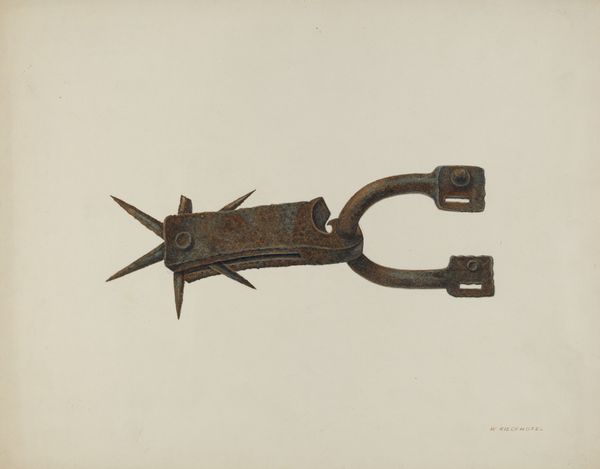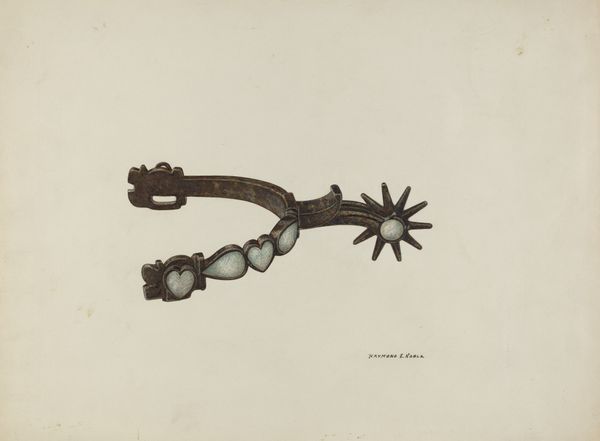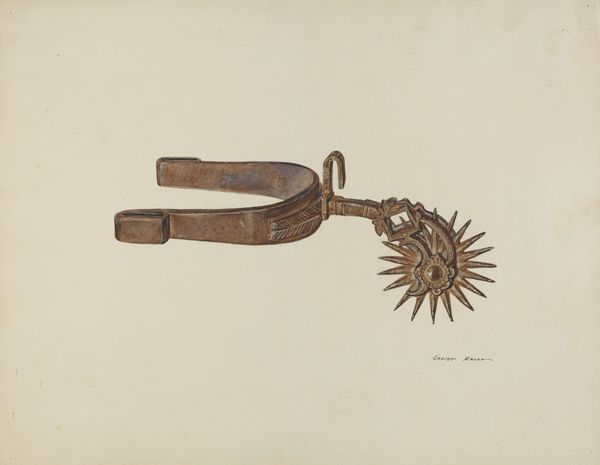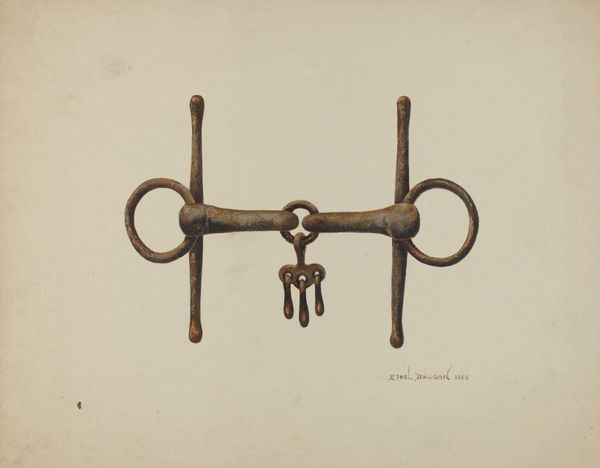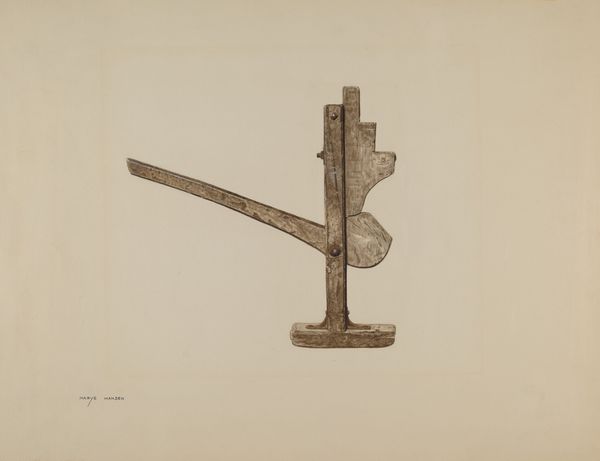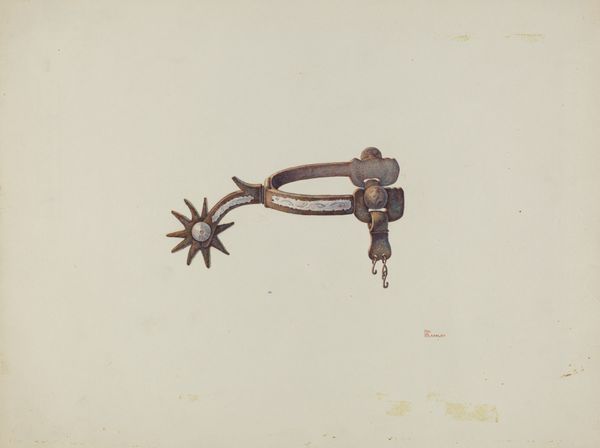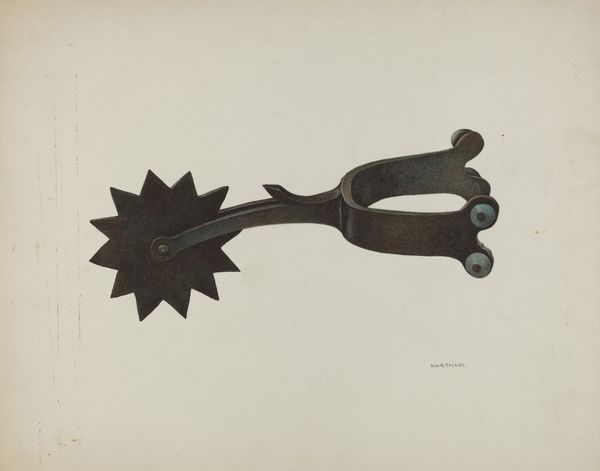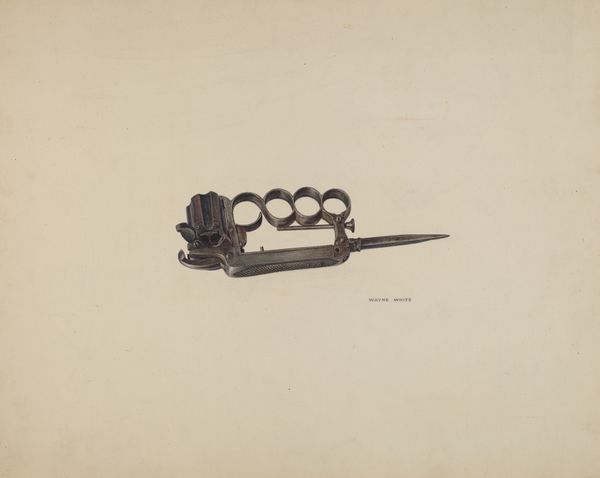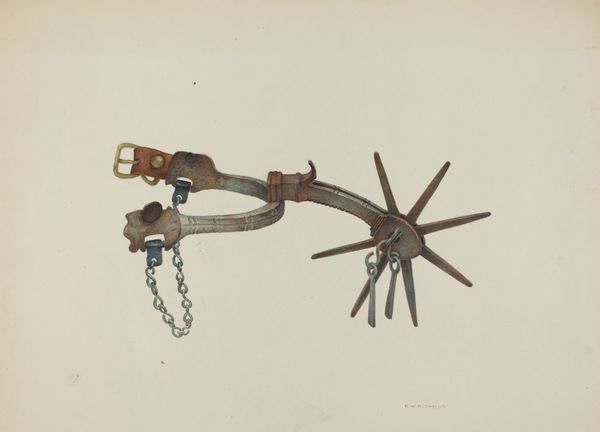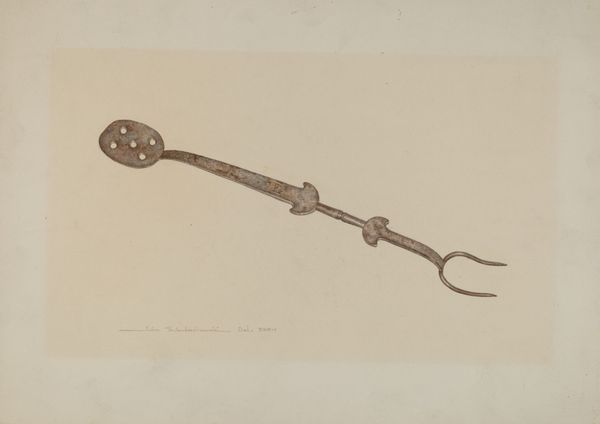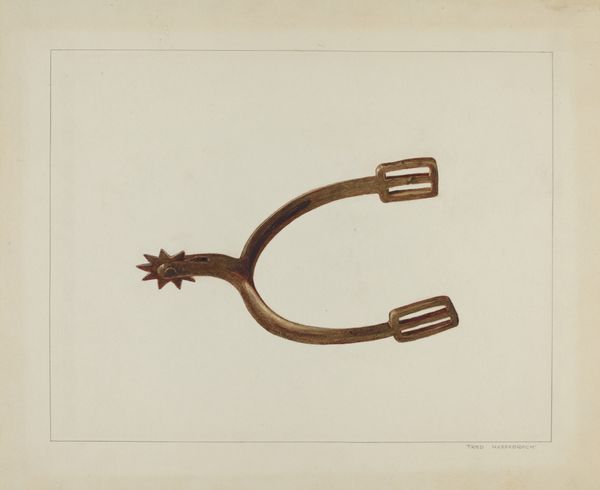
drawing, watercolor
#
drawing
#
watercolor
#
watercolor
Dimensions: overall: 26.7 x 35.8 cm (10 1/2 x 14 1/8 in.) Original IAD Object: 6" long; 4" wide
Copyright: National Gallery of Art: CC0 1.0
Curator: Today, we're looking at a watercolor and drawing work simply titled, "Spur," created around 1940 by George E. Rhone. I'm immediately drawn to its almost brutal elegance. Editor: Yes, brutal elegance—the starkness of the single object centered, that metal point radiating outwards like the sun, and the potential pain it signifies all coalesce to me. It speaks of mastery and force. Curator: Note how the material qualities, rendered so carefully, speak volumes about its function. Rhone is clearly interested in how such objects are manufactured, used and, dare I say, consumed. I find the emphasis on the metal intriguing, how it is worked to the design. Editor: Absolutely. And observe the symbol, a sharp sunburst. It represents domination. The spur is literally an extension of the rider's will, controlling the horse. The jinglebobs aren't just decorative; they make sure the sound alerts the animal every time before applying direct force to the animal's flesh. Curator: The jinglebobs exemplify a crucial part of this process. It highlights that spurs aren’t only implements of direct, sometimes brutal, action, but they’re also instruments that provide riders additional subtle degrees of persuasion via both visual and auditory signal. They represent layers of meaning and application far beyond being crude instruments. Editor: Precisely. What do we see as an individual object? How it reflects culture? Or how it's portrayed? In Western culture, the figure of the cowboy is tied to an ideology. Freedom. Untamed nature. Rhone isolates one artifact that embodies an ideal that is maybe more complicated. Curator: I would contend that separating Rhone’s watercolor here from any larger context is misguided. The production and consumption of spurs speaks to the way individuals within particular industries seek methods and mechanisms of achieving professional excellence. I look to this watercolor drawing to tell us something crucial about American material culture. Editor: An implement can have two functions and two symbolic readings. I appreciate, thinking about the power and skill of the rider in play with his material accoutrement—the cultural impact and symbolic density within a single object. Curator: Considering both angles truly helps one fully appreciate Rhone's work here. Editor: It really is so much more than just metal and water.
Comments
No comments
Be the first to comment and join the conversation on the ultimate creative platform.
